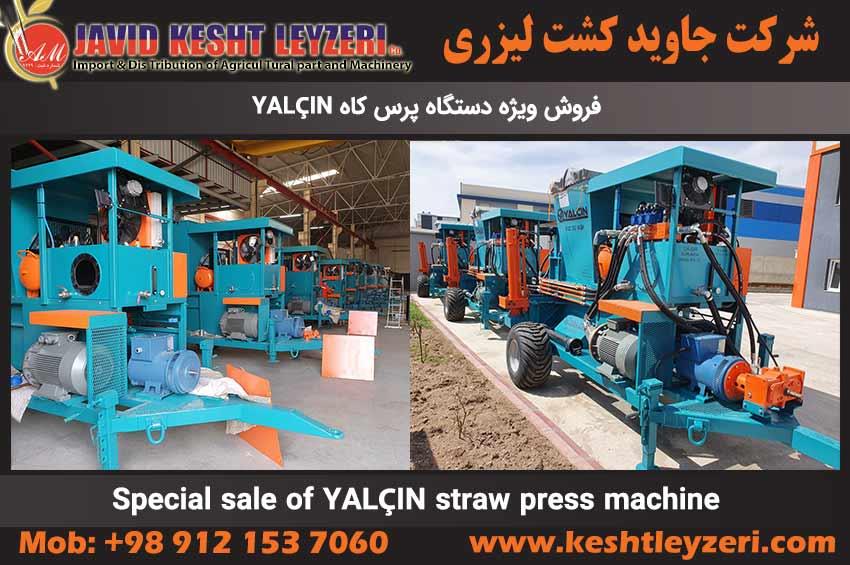
Comparison of additives and absorbents on silage of different forages
javid keshtleyzeri Co.ltd
Introduction
Ensiled fodder refers to green and juicy plants fermented in acidic and oxygen-free conditions. Fodder ensiling is one of the ways to provide animal feed. In recent years, this method has become very important and in many areas it has replaced the use of dry fodder and direct feeding of fodder. The advantage of forage ensiling compared to drying it is the lower need of the silage method for suitable weather and its higher digestibility. Also, the reduction of dry matter during the storage period is less in forage silage than drying (McDonald and Heron, 1993).
Corn silage makes up about half of the forage fed to cows on commercial dairy farms. In many parts of the country, fodder corn is usually grown as a second crop in July, therefore, it does not have enough time to mature and is forced to be ensiled with low dry matter (22 to 22 percent of dry matter). While in terms of preservation Nutritional value and quality characteristics, the optimal amount of silage corn dry matter for use in the diet of dairy cows should be between 32 and 32% (Phipps et. al., 2000).
Ensiling products with low dry matter leads to the preparation of low-quality silage, which produces a lot of effluent during ensiling. In addition to wasting valuable fodder nutrients in the ensiling process, this problem also pollutes surface and underground water (Graves, 1993). Usually, in order to help reduce the loss of dry matter and improve the nutritional value of forage, it is recommended to add high moisture absorbing materials to the forage being ensiled in the ensiling process.
Some of these adsorbents, despite being able to reduce waste in the form of effluents, may also reduce the nutritional value of fodder. For example, (Welford et al. 1983) reported that the addition of chopped barley straw to gramine forage at the time of ensiling reduced the in vitro degradability of the ensiled forage. Therefore, when corn fodder is ensiled with low dry matter, it seems necessary to use a suitable absorbent material and determine its required level in order to prevent the waste of ensiled fodder effluent (Khorvash et. al., 2005).
Silage effluent and environmental pollution caused by it
During the ensiling process, typically when the product is ensiled with high moisture, it may produce effluent. Effluent release during silage production indicates the loss of silage dry matter and the reduction of its nutritional value (Gebrehanna et. al., 2014).
The amount of effluent produced in commercial silos depends on several factors including: amount of forage dry matter (Haigh, 1988), harvesting and crushing methods, degree of compaction which affects the amount of air trapped in the silage mass, composition additives and the nature of the product is fodder (Alii and Baker, 1985).
Wastewater production can lead to the loss of a significant amount of dry matter (12%) (Larsen and Tech, 2015). Making silage from forage with a dry matter content of 12% may lead to the loss of large amounts of dry matter (up to 12%) in the wastewater, while wilted crops with a dry matter content of about 32% will produce a small amount of wastewater (Navid Shad). and Jafari Shiadi, 2013). Also, the amount of wastewater protein is closely related to the amount of its dry matter than the ratio of protein in feed and that the amount of ash in the dry matter of wastewater is 2.5 times higher than the amount of ash in feed (Fisher et al., 1981).
Effluent is a major problem in silage and the maximum production of silage is in the first week of ensiling (Bastiman, B. 1976). The silage is either used as fertilizer (Kemppainen, E. 1987) or as animal feed. It is domesticated (Patterson, D.C. 1990). Contaminated silo effluent
It is a serious contaminant of water because its high concentration of organic compounds has a high biological oxygen demand (BOD).
The values recorded in a small watercourse after pollution are 2 to 700 mg/L of ammonia, 0.7 to 10 mg/L of dissolved oxygen and pH of 4 to 9, depending on the amount of silage effluent in the watercourse (McAhon et. al. ., 1991). The penetration of silo effluent into the water stream causes a rapid increase in microbial activity and then a decrease in oxygen, which can cause the death of fish and aquatic organisms (Deans, E.A. 1992).
The biological oxygen demand of silo effluent may reach more than 200 times the biological oxygen demand of untreated wastewater. The biological oxygen demand of silo effluent is compared with the BOD of other water pollutants in Table 1.
Table 1- Biological oxygen demand of different pollutants
Pollutant type (BOD) mg of oxygen per liter
Silo effluent 90,000
Undried pig manure 35.000
Cow urine 19.000
Undried cow manure 5000
Milk 140,000
Wastewater of domestic animals 500
Preventing silage spoilage by using additives
Silage additives can be used to increase silage fermentation and its quality (Ashbell et. al., 1990). Silage additives are classified based on the action they perform, which are: fermentation stimulators, fermentation inhibitors, aerobic loss inhibitors, nutrients and adsorbents (McDonald et al., 1991). Additives should be used according to the needs and characteristics of the silage.
It should be noted that additives can improve silage quality and minimize losses, but they cannot compensate for poor silage management and construction. There is a long list of different additives in different forms including: liquid, powder or suspension.
Additives can be used during harvest and crushing operations or during silage filling. There are many products and additives available that are claimed to improve silage quality. Ideally, a silage additive should be safe and reduce dry matter loss, improve the sanitary quality of the silage, limit secondary fermentation, improve aerobic stability, increase the nutritional value of the silage by increasing the efficiency of its use, and return more than the cost of the additive to the farmer. Merensalmy, 1991). The potential role of silage additives is given in Table 2.
Table 2- Potential role of additives in silage
Fodder conditions and silage method Type of additives
Forage with low dry matter, low soluble carbohydrates, molasses, acid or salt of acids
Forage with low dry matter, high soluble carbohydrates, inoculants (LAB), acid or acid salt
Good conditions of aerobic stability when the silo is opened, there is no need to use
Significant risk for aerobic spoilage bacteria, or bacterial supplementation and organic acid salts
In recent years, the interest in retaining the effluent inside the silo by introducing absorbent materials into the silo during ensiling has been more developed (Jones, R. 1996). In using absorbent materials, the aim has been to prevent the waste of silo effluent, which contains valuable nutrients.
Ability to absorb different materials
Dexter et al. has compared the water holding capacity of potential wastewater adsorbents. His information is given in Table 3. It has been well shown that under laboratory conditions, materials with more fiber such as corn cob wood, sugar beet pomace, dry fodder and straw are more absorbent than cereal grains. Jones found that molasses-dried sugar beet pulp, processed straw, and oat residues were more effective water retainers than rolled oats or oats.
It is concluded from laboratory studies that fiber-rich adsorbents are probably more effective in retaining wastewater. Incorporating too much ligninized fiber, such as straw or heavily wooded dry forage, will usually reduce the nutrient quality of the silage. Corn grits are less effective absorbents, but at the same time they increase the quality of silage nutrients.
Table 3. Different water storage capacity
Edible material Size Water holding capacity (g/g dry matter)
Coarse ground corn kernels 0.62
Corn cob sticks Medium 0.68
Small corn cob wood 0.76
Corn cob wood 1.59
Corn cob stick medium 1.81
Small corn cob wood 2.13
Milled oats 0.77
Dry sugar beet pomace 2.75
Dry hay 2.20
Fully mixed dry grass fodder 2.22
Oat straw 2.47
Source: Dexter, S.T. 1961
Inoculant bacteria
Bacterial inoculants are used to increase silage fermentation. These materials are safe, non-corrosive for devices and easy to use, and are considered as natural products. Most of the commercial inoculants for silage include bacterial inoculants based on lactic acid with homogeneous fermentation such as (Lactobacillus plantarium, Enterococcus faecium and Pediococcus species). These materials are used because they are faster producers in terms of lactic acid. Bacterial inoculants are added to silos based on lactic acid with homogeneous fermentation to improve and increase dry matter and energy recovery.
However, most of these inoculants do little to prevent the growth of yeasts and fungi. Some inoculants contain bacteria that can produce propionic acid, known as propionic bacterium. However, aerobic stability has not been improved in most studies using these materials because these organisms generally do not tolerate the acid content of silage and grow slowly.
In some recent studies, newer bacterial inoculants that produce large amounts of acetic acid have improved aerobic stability (Ashbell et. al., 1990). In lactic acid bacteria inoculation, it is most effective if the microbial population is naturally less than 10,000 organisms per gram of fresh sample because natural microbes compete with the inoculum. In order to dominate the whole forage, microbial bacteria must be in high amount (Oladosu et. al., 2016).
Most of the lactic acid-producing bacteria in silage forage grow in the temperature range between 2 and 22 °C, and their optimal temperature range is between 22 and 42 °C. Lactic acid producing bacteria are able to bring the silage pH between 4 and 2, which depends on the type and type of forage product. All lactic acid producing bacteria are facultative aerobes, but some of them excel in anaerobic conditions.
sugars
Adding carbohydrate-rich materials such as sugar, molasses, whey, citrus pomace and potatoes to silage increases the substrate supply for lactic acid producing bacteria (Henderson, 1993). The addition of sugar caused an initial increase in the number of lactic acid producing bacteria, especially those with a high capacity to produce lactic acid.
Adding glucose improves fermentation (Velizadeh et al., 2012). Many experiments have been carried out and it is determined that the addition of glucose or sucrose is suitable for the development of fermentation. Of these two sugars, glucose is superior, because sucrose fructose is finally converted into mannitol by internal heterogeneous lactic acid producing bacteria. In practice, natural sugars such as sucrose, glucose and fructose are not used due to their high price, and cheaper products containing them, such as molasses, are used (Volizadeh et al., 2012).
Molasses has been used as a fermentation stimulator for many years and there is a lot of interest in its use. Molasses is a by-product of sugarcane and sugar beet industries, which contains 08% of soluble carbohydrates and sucrose is its main part. Molasses provides a relatively inexpensive source of fermentable carbohydrate for lactic acid bacteria.
Molasses has been proven in numerous experimental silages to be an effective silage additive in terms of promoting lactic fermentation, reducing silage pH, reducing clostridia fermentation, proteolysis, and generally reducing organic matter losses. This is of particular benefit to forage that has Fermentable carbohydrates are low and are used for lactobacilli (Kung, 2014).
As a silage additive, molasses increases the dry matter and lactic acid of the silage and reduces the pH and ammonia nitrogen level. Adding molasses to ensiled products increases the leachate from the silage, although the use of this substance may reduce the overall loss of dry matter (Valizadeh et al., 2012).
Dry whey can be used up to ten kilograms per ton of silage. This substance usually has 24 grams per kilogram of dry matter and 44 grams of lactose. Of course, many researchers believe that this substance is very diluted in terms of sugar content and cannot be a good additive.
Inhibitor of aerobic spoilage
To control aerobic spoilage, the growth and activity of spoilage-initiating microorganisms must be prevented. Some additives such as chemical additives based on the production of volatile fatty acids such as propionic acid, acetic acid and biological additives based on bacteriocin-producing microorganisms such as lactobacilli and bacilli are effective in inhibiting aerobic spoilage. which have strong antifungal activity from sorbic acid and benzoic acid.
urea
Urea was added to corn silage as a source containing significant amounts of crude protein. When ammonia and urea are added to the diet, special care must be taken to ensure a balance of degradable and non-degradable protein requirements for ruminants. Although silage fermentation is stimulated by ammonia, silage processes will take longer due to the buffering effect of ammonia.
It has been reported that the use of dry ammonia had an adverse effect on dry matter recovery, especially in sorghum silage with high moisture content. Urea and ammonia can improve the aerobic stability of silver (Yitbarek and Tamir, 2014). In Hosseini et al.'s research in 2012, the addition of urea led to an increase in crude protein, pH, ammonia nitrogen and a decrease in soluble carbohydrates. Also, in the treatments inoculated with microbial additive, the amount of ammonia nitrogen, carbohydrate decreased and the amount of crude protein increased by almost 9% compared to the control group.
Addition of urea in gramine forage silage led to an increase in crude protein pH and ammonia nitrogen. Soluble carbohydrate in silage enriched with urea and biomin microbial additive decreased, but increased in silage containing formic acid compared to the control group.
Dry matter, starch, insoluble fiber in neutral and acidic detergents were not affected by the type of additive. Adding limestone to corn silage increases the amount of calcium in the silage and finally in the whole ration. Added limestone helps prolong the fermentation process and increase organic acids. Corn silage treated with limestone has shown very little changes in milk production, and researchers have reported no difference in animal dry matter intake (Elhag, 1978).
Bentonite and polymers
Bentonite colloidal clay is known as an excellent moisture absorbent. The researchers concluded that this substance reduces the nutritional value of silage (Velizadeh et al., 2012). Bentonite clay reduces wastewater losses, but it mostly reduces water-soluble carbohydrates.
The forage treated with bentonite clay had a lower pH than the wilted forage silage, but it had a higher pH than the direct cut forage silage and the forage silage treated with newspaper or chopped dry hay. Also, silage pH is increased by adding 1% bentonite clay. Addition of clay bentonite in silage consistently reduced lactic acid concentration (Fransen and Strobi, 1988).
Cook et al. 1980 observed that the use of 7 kg per ton of sodium bentonite in silage silage reduces the total amount of produced effluent and the peak amount of produced effluent by 22% compared to untreated forage. The use of 21 kg/ton reduced the total amount of produced effluent by 47% and the amount of produced effluent at peak production by 32% more, compared to 7 kg/ton of sodium bentonite. The digestibility and amount of dry matter consumption of silage in sheep decreased relatively with the use of sodium bentonite.
McDonald and Heron 1991 stated that most acrylamide-based polymers are sensitive to low pH and high osmotic pressure and water loss, thus losing their water holding capacity. Thomas et al., 1987 in their studies observed that effluent losses in laboratory silos decreased exponentially at polymer application rates from 0 to 10 g/kg of gramine forage, but had no obvious detrimental effects on silage fermentation. Also, the production of effluent from ensiled rye with the addition of ammonium polyacrylamide decreased by only about 20% (Mayne, 1990).
The loss of silage effluent with low dry matter was high (74 ml/kg fresh), and almost by adding barley (10 and 15%) or zeolite plus limestone or bentonite during the ensiling process, Completely deleted. However, among the compounds that were tested, only barley improved the nutritional value of silage in addition to reducing silage effluent (Khorvash et. al., 2005).
cereal
Laboratory tests showed that grain semolina is less preservative than most fibrous materials such as dried sugar beet pomace and straw. Various studies have shown that the addition of rolled or milled grains reduces wastewater production. Mardoch et al. found that the effluent production from ensiled alfalfa was reduced by adding oat groats (50 kg/ton of product) before ensiling. The addition of oat groats resulted in excellent quality silages.
Dunn and Appleton also found that the incorporation of rolled oats (40 kg/ton) in rye product (14% dry matter) reduced the effluent from 127 L/ton to 35 L/ton in the first experiment, but in the second experiment the effluent was apparently reduced by adding Joe rose. Barley supplementation did not affect silage fermentation or improve live weight growth of calves or lambs compared to the untreated control.
Sporundelli showed that the addition of dry rolled oats reduced effluent production from ensiled grass by 2.14% dry matter and clover-grass crops by 5.17% dry matter in experimental silos. Effluent production decreased randomly with increasing input rate and the calculation showed that half gram of effluent was absorbed per gram of oats.
Jones et al. found that the addition of rolled oats (45 kg/ton) reduced effluent production from rye silage by 1.16% dry matter in 60 tons of silage. Table 4 describes more details of this experiment. Evaluation in sheep of higher metabolizable energy values and improved the nitrogen retention of silages to which barley and formic acid were added. Sporondelli found that the combination of rolled oats at the level of 36% of the total ration in silos increased dry matter intake and milk production. In dairy cows compared to traditional silage feeding with a similar oat supplement daily, Mosley and Ramanathan showed that the addition of rolled oats in amounts of 25 kg/t and 50 kg/t, in rye-clover ensiled ability It significantly increased the digestion and retention of nitrogen in sheep.
Table 4- The effect of adding rolled oats in ensiled rye on wastewater production (liters per ton of grass)
Silage treatment days: 1 2 5 14 21 136
Witness 1.7 13.5 19.1 26.7 32.0 51.4
Formic acid 6.4 21.8 30.4 39.8 42.9 60.2
Atmosphere 0.3 6.7 10.0 14.4 17.9 26.8
However, the evidence on the effectiveness of cereal grains as an effluent absorbent is clearly conflicting.
Dried sugar beet pulp
Laboratory tests have shown that dried sugar beet pulp is very absorbent. This concentrate is available as pulp or with 20% molasses. The molasses pulp is widely used as a concentrated feed and is highly digestible. Its addition to grass silage is generally expected to increase nutrient quality, while added molasses should improve fermentation when low sugar crops are ensiled. Delphi and Demarcioli found that the addition of sugar beet pulp (60 kg/ton) in the red clover product treated with formic acid reduces the effluent, but increases the fermentation losses.
Oakley's results showed that beet sugar without molasses is more absorbent than its molasses form. Addition of sugar beet at 50 kg/t in a rye product containing 9.13 dry matter reduced effluent by about 40% in 6 kg silos compared to a 65% reduction of sugar beet without molasses at the same input level. Potts and Morde found that the holding capacity of sugar beet effluent without molasses decreased with increasing input rate.
As a result, the addition of sugar beet improves the quality of silage nutrients and most of the beet remains in the silage and is available as an edible nutrient. Addition of sugar beet, apart from feeding it as a supplement, seems to improve fermentation and reduce losses in nutrients and dry matter of silage depending on the amount that is introduced into the silage.
Dry fodder and straw
Several studies have shown that straw and dry fodder in different physical forms are effective adsorbents for silage effluent. Raidin found that the addition of dry milled forage or straw, if half of the dry matter was mixed with the forage and the other half was spread over the silage floor, prevented effluent loss. In this research, the addition of ground dry fodder or straw reduced the quality of silage nutrients, and this was compensated by the addition of more cereal grains and malt.
It was also found that the addition of these substances can also improve fermentation through the release of available carbohydrates from grains through malt enzymes. In another experiment, it was reported that the addition of straw is recommended to reduce the effluent loss for ensiling wet sugar beet. In addition, Damert, Salo, and Surmansen also recommended the addition of straw to reduce the waste of ensiled sugar beet. Also, Norgaard Pederson found that adding 10 to 15% of coarse ground straw or chopped straw and processed with alkali prevents the wastage of sugar beet silage effluent.
In this experiment, stable and high-quality silage straw was produced and led to the production of a large amount of fermentative acids, but the pH value increased, especially in straw processed with alkali, the pH value was recorded up to 83.4, and the digestibility of silage organic matter also increased from 75 % (untreated silage) decreased to 56% at 15% milled straw input rate. But the introduction of straw treated with alkali increased the digestibility of organic matter from 67% to 73% at the input rate of 6% and up to 70% at the input rate of 12% of ground straw.
The straw used with an input rate of 12% achieved the same organic matter digestibility as the untreated control. Phillips and Pendulum incorporated chopped straw into alfalfa and wheat silage with 20% dry matter, resulting in an increase in silage dry matter of about 5 units. Also, the digestibility of silage in feeding heifers decreased with the introduction of straw.
Wolford et al. reported that straw treated with alkali was effective in reducing rye silage effluent. Finally, it should be said that in recent years, there has been no interest in using dry fodder and straw as silage absorbents, and these materials have not been used except treated straw in some special absorbents.
Researchers believe that the introduction of such bulky materials takes a significant amount of valuable and relatively expensive silo space without having a significant nutritional effect.
In the end, it can be concluded that due to the wide use of silage of different plants as the main fodder in dairy farms and on the other hand due to the forced use of high moisture fodder for the preparation of silage, which leads to the occurrence of waste water losses in the silo. It is necessary to use a suitable absorbent that does not reduce the quality of the silage despite keeping the effluent in the silo and prevents the loss of valuable nutrients of the silage.
References
Hosseini, M. Danesh Mesgaran, M. Vakili, A. Naserian, A. Optimum processing method of soured corn grass using microbial and chemical additives and its effect on chemical composition, parameters of gas production and microbial protein production in vitro. Proceedings of the 7th Congress of Animal Sciences of Iran. 10. September 19 1382
Valizadeh, R. Naserian, A. and Azhdari Fard, A. 2012. Biochemistry of silage. Translation. Publications of Ferdowsi University of Mashhad.
Alli, I., Thiffault, C., & Baker, B. E. (1985). A device for monitoring silage effluent produced in laboratory silos. Journal of Dairy Science, 68(12), 3355-3359.
Appleton, M., & Done, D. (1987). The effect of an inoculant silage additive on the fermentation of grass and animal performance. In SILAGE CONFERENCE (Vol. 8, pp. 15-16).
Bolsen, K. K., Lin, C., Brent, B. E., Feyerherm, A. M., Urban, J. E., & Aimutis, W. R. (1992). Effect of Silage Additives on the Microbial Succession and Fermentation Process of Alfalfa and Corn Silages1. Journal of Dairy Science, 75(11), 3066-3083.
Cook, J. E., Wilkinson, J. M., & Woolford, M. K. (1980). Effects of addition of sodium bentonite to unwilted grass on the flow of effluent from the silo and on nutritive value of silage for sheep. Animal Production, 30, 467.
Dammert, S. (1970). Contribution to the solution of effluent problems in the production and feeding of sugar-beet tops silage. Bayerisches Landwirtschaftliches Jahrbuch, 47(4), 387-424.
Dulphy, J. P., & Demarquilly, C. (1976). Incorporation of dry beet pulp in silage: utilization by dairy cows. Bull. Tech. Center Rech. Zootech. Vet. Theix, 22, 45-52.
Elhag, M. G. (1978). Evaluation of silage additives and fermentation characteristics of forages using model laboratory silos.
Fisher, L. J., Zurcher, P., Shelford, J. A., & Skinner, J. (1981). Quantity and nutrient content of effluent losses from ensiled high moisture grass. Canadian Journal of Plant Science, 61(2), 307-312.
Fransen, S. C., & Strubi, F. J. (1998). Relationships among absorbents on the reduction of grass silage effluent and silage quality. Journal of dairy science, 81(10), 2633-2644.
Gebrehanna, M. M., Gordon, R. J., Madani, A., VanderZaag, A. C., & Wood, J. D. (2014). Silage effluent management: a review. Journal of environmental management, 143, 113-122.
Graves, R. E., & Vanderstappen, P. J. (1993).Environmental problems with silage effluent. Silage Production from Seed to Animal (NRAES-67).
Northeast Regional Agricultural Engineering Service, Ithaca, NY. Haigh, P. M. (1998). Incorporation of straw with grass at ensilage. Journal of agricultural engineering research, 70(4), 383-388.
Henderson, N. (1993).Silage additives. Animal Feed Science and Technology, 45(1), 35-56.
Jones, R., & Jones, D. I. H. (1996). The effect of in-silo effluent absorbents on effluent production and silage quality. Journal of Agricultural Engineering Research, 64(3), 173-186.
McDonald, P. (1981).The biochemistry of silage.
John Wiley & Sons, Ltd.. Mohammadzadeh, H., Khorvash, M., Ghorbani, G. R., & Yang, W. Z. (2011).Effects of a dual-purpose bacterial inoculant on the fermentation characteristics of high-moisture maize silage and dairy cattle performance. South African Journal of Animal Science, 41(4), 368-376.
MOORE, C. A., & Kennedy, S. J. (1994). The effect of sugar beet pulp‐based silage additives on effluent production, fermentation, in‐silo losses, silage intake and animal performance. Grass and Forage Science, 49(1), 54-64.
Moseley, G., & Ramanathan, V. (1989).The effect of dry feed additives on the nutritive value of silage. Grass and Forage Science, 44(4), 391-397.
Murdoch, J. C., Balch, D. A., Foot, A. S., & Rowland, S. J. (1955).The ensiling of lucerne with addition of formic and glycollic acids, molasses and barley meal, and with wilting. Grass and Forage Science, 10(2), 139-150.
Norgaard-Pedersen, E. J., Moller, E., & Skovberg, E. G. (1968).Experiments with addition of formic acid in the ensiling of fresh and prewilted pasture crops. Tidsskrift for Planteavl, 72, 356-366.
O'Kiely, P. (1992).The effects of ensiling sugarbeet pulp with grass on silage composition, effluent production and animal performance. Irish Journal of Agricultural and Food Research, 115-128.
Oladosu, Y., Rafii, M. Y., Abdullah, N., Magaji, U., Hussin, G., Ramli, A., & Miah, G. (2016).Fermentation quality and additives: a case of rice straw silage. BioMed research international, 2016.
Rydin, C. (1960).Studies on fermentation processes in silage. Archiv für Mikrobiologie, 38(2), 156-170.
Salo, M. L., & Sormunen, R. (1974). Sugar beet tops and beet top silage. Losses during ensilage and binding of effluent. J. Sci. Agric. Soc. Finl., 46, 97-102.
Woolford, M. K., Wilkinson, J. M., & Cook, J. E. (1983). nvestigations on the effect of sodium bentonite and other moisture absorbents on the production of effluent from grass silage. Animal feed science and technology, 8(2), 107-118.
Yitbarek, M. B., & Tamir, B. (2014). Silage additives. Open Journal of Applied Sciences, 4(05), 258.






